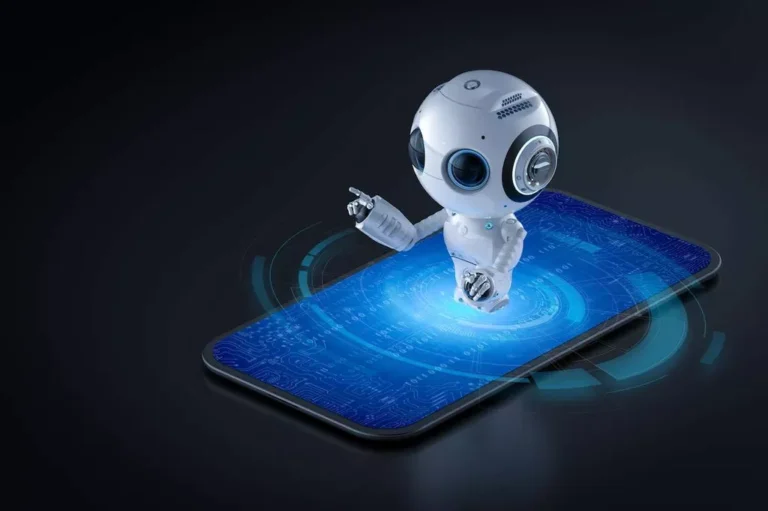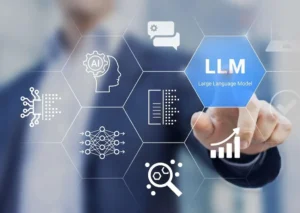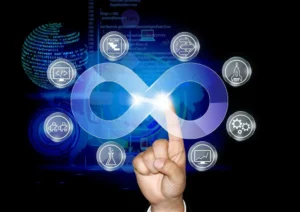Exploring AI Agents: Definition, Classification, Features

The most obvious way to boost the effectiveness of your product or company today is AI implementation and optimization of workflow using intelligent technologies. In light of this, AI agents become pivotal for running a business. They form the core of intelligent systems, enabling them to assist in customer service, manage data, or even control autonomous systems.
Reactive, learning, and model-based are just a few categories that showcase the versatility and adaptability of such programs within different scenarios. In this guide, we will uncover the capabilities of AI agents and how you can use them to benefit your product.
Explaining What Are AI Agents and Characteristics that Define Them
Let’s start with the definition: what are AI agents? This software program or entity possesses the capacity to function independently, interpret its surroundings, make choices, and execute actions aimed at accomplishing particular objectives. The jump in their development is due to the growth of AI popularity and implementation in various domains. Here’s a breakdown of their key characteristics:
- Autonomous work is the most beneficial feature. Agents are able to work on their own without constant human control.
- Programs are equipped with sensors or data inputs that allow them to gather information, including data from cameras, microphones, sensors, or other sources.
- Systems base their decisions on the data they have and programmed or learned knowledge.
- The system can perform tasks to achieve specific objectives, from physical movements in robotic systems to virtual actions in software applications.
Finally, smart agents will adapt to changing conditions and self-educate from their experiences to improve performance over time and adjust to new situations.

We are confident that we have what it takes to help you get your platform from the idea throughout design and development phases, all the way to successful deployment in a production environment!
Classification of Smart Agents
Understanding different types of AI agents is essential for tailoring AI systems to specific tasks and requirements. There are four basic types we are going to showcase.
Simple reflex agents
They are the foundational building blocks of AI, known for their basic decision-making abilities. These agents operate on a “stimulus-response” basis, where they react to specific conditions with predefined actions.
Example of AI agents:
- Thermostats: Thermostats maintain room temperature by turning the heating or cooling system on or off based on a predefined temperature threshold.
- Elevators: Elevator systems use simple reflex agents to respond to button presses and stop at specific floors.
- Light Sensors: Some outdoor lighting systems use light sensors to turn on when ambient light levels decrease, such as during dusk. These systems operate on a simple reflex, responding to the current light conditions.
- Pop-up Ads: Some basic online advertising pop-ups appear when a user visits a webpage. These pop-ups may appear immediately or after a predefined time delay, irrespective of the user’s browsing behavior.

Model-based reflex agents
Model-based reflex agents take a step further in decision-making by maintaining an internal model of their environment. This model allows them to anticipate the consequences of their actions and make more informed decisions.
Examples:
- Chess Playing AI: These programs simulate potential future moves and their outcomes to make decisions in chess games.
- Robot Vacuum Cleaners: Vacuum robots navigate a room using internal maps, optimizing their cleaning routes.
Goal-based agents
Such agents exhibit a more advanced level of intelligence by working toward predefined objectives or goals. They assess their current state, set goals, and plan a sequence of actions to achieve those goals.
Examples:
- GPS Navigation Systems: Navigation systems set the goal of reaching a destination and plan the best route to get there.
- Personal Finance Apps: Financial apps help users achieve their financial goals through planning and tracking expenses.
Utility-based agents
Utility-based agents represent the pinnacle of AI decision-making. These agents consider both goals and trade-offs by maximizing or minimizing a specific utility function. They make choices that offer the best overall outcome, even when faced with complex decisions.
Examples:
- Autonomous Vehicles: Self-driving cars evaluate various factors such as safety, time, and fuel efficiency to make driving decisions.
- Aircraft Flight Software: Aircraft systems optimize routes to maximize fuel efficiency and minimize travel time.
Learning agents
Self-educating programs are able to adapt and improve their performance using their own experience and data. They learn from their past actions and make better decisions in the future. Look at the applications:
- Learning agents power recommendation engines in e-commerce platforms and streaming services to suggest products or content based on user preferences.
- Chatterbots and digital assistants employ such software to comprehend and respond to user queries in a more natural manner.
- Learning software is used to pinpoint unusual patterns and potential fraud in financial transactions by learning from historical data.
Functions of Autonomous Agents
AI-based programs are designed to perform specific tasks or actions autonomously. This can include physical tasks, such as controlling robotic arms in manufacturing processes, or virtual tasks, like data processing in software applications.
AI assistants make decisions based on their programming, learning, or a combination of both. They evaluate available options, assess the potential outcomes, and choose the best course of action to achieve their objectives.
Some machine learning agents are designed for human-computer interaction. They understand and respond to user input through natural language processing, speech recognition, or other modalities. Virtual assistants and chatbots are examples of AI agents that facilitate human-computer communication.
Predictive analytics and forecasting future events or outcomes are also the areas where autonomous agents are beneficial. They analyze historical data, identify trends, and make predictions, which can be used in various fields such as finance, healthcare, and weather forecasting.

Interaction with People and Systems
AI agents interact with users and different systems through a variety of methods and technologies, depending on their specific applications and capabilities. They often incorporate conversational AI as a key component to facilitate communication with users. Natural language processing enables them to interpret text or speech and provide relevant responses. NLU machine learning helps recognize the user’s intent, enabling them to determine what action or response is required. Siri, Alexa, and Google Assistant are examples of smart agents that use NLP to communicate with users.
Some programs interact with people through visual interfaces. For example, AI in computer vision systems can understand gestures, facial expressions, and other visual cues to engage with users in immersive experiences.
Intelligent agents employ data analysis and machine learning to provide tailored suggestions. This interaction involves understanding user preferences and tailoring content, products, or services accordingly, as seen in content recommendation systems and e-commerce platforms.
Agent-based simulations are frequently used to model the interactions of individual entities within complex systems, allowing researchers to understand how collective behavior emerges from the actions of individual agents.
Interaction with other systems includes the following:
- API: interacting with systems through APIs and web services.
- Robotic Systems: interacting physically with the environment and sensors.
- Cloud-Based Services: accessing cloud resources and sharing data.
- Collaborative Systems: coordinating actions within networks.
- Machine-to-Machine Communication: management and optimization of industrial processes.
- Blockchain and Distributed Systems: facilitating secure financial transactions.
Facts about AI Agents
While we often think of AI agents as software running on computers or robots, they can also exist in virtual environments, performing tasks within video games, simulations, and virtual worlds.
AI agents have achieved remarkable successes in challenging games. For example, IBM’s Deep Blue defeated world chess champion Garry Kasparov in 1997, and Google’s AlphaGo defeated the world Go champion Lee Sedol in 2016.
Emotion recognition technology in cognitive agents can analyze facial expressions and vocal tone to detect and respond to human emotions. This is used in applications like virtual therapy and sentiment analysis in customer service.
NASA employs intelligent agents in space missions to autonomously navigate and make decisions, given the vast distances between spacecraft and mission control on Earth.
Future of Intelligent Agents
As technology continues to advance, AI agents are poised to play an increasingly influential role in various aspects of our lives. Experts are sure they will be integrated into a growing number of devices and systems, expanding their presence in everyday routine. This will include widespread integration with IoT devices, smart homes, vehicles, and industrial equipment.
In physical applications, intelligent agents will become more advanced in robotics and automation. This will lead to safer and more capable autonomous systems in industries such as healthcare, manufacturing, and transportation.
Ongoing advancements in artificial intelligence, machine learning, and data analytics will shape the future of software. These programs will be indispensable, offering assistance, personalization, and efficiency across various domains. However, the responsible and ethical use of software will remain a critical consideration as they continue to evolve.
Top Articles
LLMOps: A Complete Overview of the Best Practices
I am here to help you!
Explore the possibility to hire a dedicated R&D team that helps your company to scale product development.






